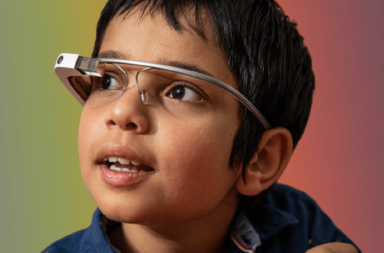According to The Matrix, in the near future, a robotic uprising will take place; in which our metallic servants will turn our experiences into illusions and our bodies into batteries for the electric apocalypse… HOWEVER, until that day comes, technology and robotics are actually pretty swell for the human race – something which is no more visible than within the autism community.
To prove this (and to appease our approaching robot overlords), today I wanted to look at the best artificial advancements our community is currently blessed with. Featuring everything from supportive tech and revolutionary therapies to pieces of hard & software built in the name of fun, here are 10 technologies which are transforming autistic lives around the globe.
1. Sensory Processing Lights

For many years the world’s use of bright displays, neon lights and other alarming colours meant that technology was slowly becoming the downfall of autists. However, now thanks to a handful of innovative individuals, we’ve taken back the light and our community now has a whole host of sensory regulating tech to control and sooth at our fingertips – including tech to support with:
- Insomnia
- Anxiety
- Stress
- Aggression
- Frustration
Of course, life can’t be too easy and no one tech fits all (in fact, tackling some symptoms requires more than one apparatus) but, due to further technological advances, sourcing the correct sensory devices is as simple as a quick Google search.
2. Milo
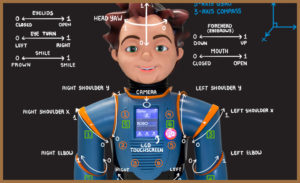
(Photo Credit: Robokind)
He may look like the spawn of Chucky and Megatron but Milo, from Dallas based robotics company Robokind, is actually an incredibly powerful autism therapy tool who has seen success in countless schools around the globe.
With a proven track record which sees autistic engagement rise to 87% (as oppose to 3% from regular therapies), Milo can help with many a social quirk including:
- Emotional regulation
- Eye contact
- Response interpretation
With that said though, it’s probably best not to see Milo as some kind of one stop shop for enhancing all social abilities, as his creators have always cited the bot as a bridge toward social development and not a key. This means that any use of the robokid to build interpersonal skills should be seen as a jumping off point. For the full impact a human touch is still required.
3. Augmentative and Alternative Communication Devices (AACs)

Some autistic people simply aren’t built to speak. It’s not their fault, it’s how we’re wired. But this doesn’t mean they are without anything to say and now, thanks to augmentative and alternative communication devices (or AACs), we have the technology to hear them.
While they may seem daunting at first, most AACs follow a simple structure of an interactive keyboard; consisting of objects or phrases which, when queued up together, can unleash full sentences and begin a verbal journey. In addition to this and, unbeknownst to me, many even include programmes which can help autistic people improve dialogue when not engaged in conversation.
Although many of these software have a nasty habit of costing more than my entire life savings (not that I have any), there are many available non-electronic versions which 1. Work just as well as the more advanced models and 2. Won’t require you to discover Black Beard’s treasure before making a purchase.
4. VR
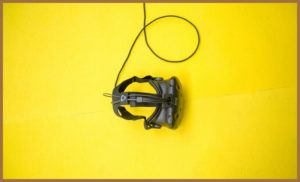
It’s been said that one of the challenges autistic people have is putting ourselves in other people’s shoes and, while this isn’t something I entirely agree with, one thing I can get behind is that, through the use of VR, autistic people can overcome this misconception by literally changing our perspective, via the over the head goggles.
However, what I particularly like about VR (which ultimately resulted in its position on today’s list) is that it can also be used vice-versa i.e. VR and certain other augmented experiences have been used to great effect as of late to create autistic experiences for those wanting to learn more about our lives. This has quickly become a great way of delivering autism awareness and understanding in breezy 5-10 minute exercises.
5. Wearable Meltdown Detectors
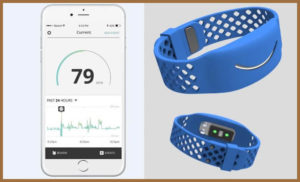
(Photo Credit: Awake Labs)
As I will proclaim until my last breath,autistic meltdowns are not the fault of the autistic person AND, more often than not, they are only made worse by our environment and bystanders in our vicinity.
Although there isn’t any tech which has found a way to stop a meltdown midflow (yet), recent innovations from Awake Labs have resulted in the next best thing: wearable tech which senses when a meltdown is incoming and allows us to leave the area and get to a safe place before it hits. This helps to limit fallout damage, as well as helping the autist return to a state of serenity faster. So, although the tech isn’t fully there yet, it does appear we are very much on the right track.
6. Google Glass
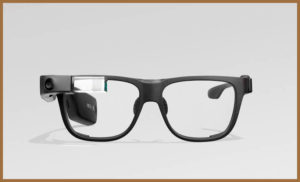
Presenting themselves as some kind of James Bond gadget from M’s testing facility, Google Glasses may look like regulars specs but, thanks to their discreet side panel, that can be programmed into almost anything, this second set of eyes can be used to create a day to day autistic gaming experience which helps us recognise and manage the 8 most common emotions:
- Happy
- Sad
- Angry
- Disgusted
- Surprised
- Scared
- Neutral
- Disdain
- Dopey (wait no, that’s one of the 7 dwarfs)
This brilliantly simple solution allows autists to build communication skills in a more natural and fun manner, begging the question: what can’t Google do?
7. GPS Trackers
![]()
Okay, so no one wants to have their whereabouts tracked every moment of every day but, as one of the constant traits of autism is that we all have an impaired sense of danger, then you can be sure that the Evel Knievel in us will, at one point or another, mean we go AWOL in the big wide world.
For autistic people who are less independent, this can cause incredible stress to our loved ones, which is why wearable GPS tech from companies like AngelSense are definitely a fair trade-off for losing some of that privacy.
Thankfully, due to a variety of different styles, wearers can be monitored whilst having their tracked status remain discrete from others (which beats the alternative option of a hat with a flag pole attached stating ‘I’M OVER HERE’). Furthermore, once the tech is equipped, the autistic person may find they have even more freedom than before, due to the long-interrupted distances these apps can cover.
8. Online Servers
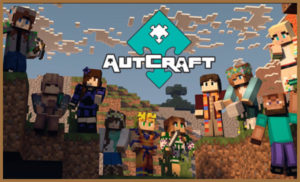
From autism-friendly gaming servers to isolated chat rooms, the development of online autism-friendly servers have not just opened up routes for autistic people to engage in activities which previously came with a risk, but they have meant that communities within our community are being built; bringing a greater sense of belonging to those on the spectrum.
Highlights of these advancements are no clearer than in the Minecraft-centric server: Autcraft, a somewhat simulated Lego experience founded by Stuart Duncan aka the AutismFather in 2010, and has become a haven for online autism friendship building, developing and improving creativity and all-around having fun.
9. Tech Companies

Okay, you’ve got me, this next one isn’t any single technology, but it is no less a technological development which has changed autistic lives. What I am referring to, of course, is the rising number of tech companies who have recognized that, by giving our community a shot at a new career, they are enriching their organization, whilst giving us not only new professions to explore but new opportunities to excel.
Examples of these awesome enterprises include: Auticon, Kinaxis and even Microsoft. And, If you (or an autist you know) sees a future in I.T. then I would heavily recommend going to these company websites to find out more.
10. Smartphones & Apps

Do you remember a time before smartphones were in every individual’s hands? Of course not, because no one wants to recall such dark times when we are busy embracing a life where autistic people and our families have access to a plethora of support resources any time, any where, including:
- Anxiety management: Aumi
- Augmentative and Alternative Communication Devices: Avaz Pro
- Social stories: Autismate
- Behaviour tracking: Autism Tracker Pro
- A quick distraction:Fruit Ninja, Doodle Jump or, dare I say it, Fortnight
I should probably state that I have not tried all of these first hand, but the point I am making here isn’t the examples themselves, but the fact that, due to technological advancements, our community is in better shape than ever before – as gadgets and gizmos become more convenient and more available to all of us on this ever-growing spectrum.
Carry on the Conversation:
What are some examples of autism apps you currently use (or have used)? I would love to expand this page’s current list – so let me know in the comments below. And, if you would like to hear more about the reasons for creating this post then check out my updated article on World Autism Awareness Day.
As always, I can also be found on Twitter @AutismRevised and via my email: AutisticandUnapologetic@gmail.com.
If you like what you have seen on the site today, then show your support by liking the Autistic & Unapologetic Facebook page. Also, don’t forget to sign up to the Autistic & Unapologetic newsletter (found on the sidebar on laptops and underneath if you are reading this via mobile) where I share weekly updates as well as a fascinating fact I have found throughout the week.
Thank you for reading and I will see you next Saturday for more thoughts from across the spectrum.


